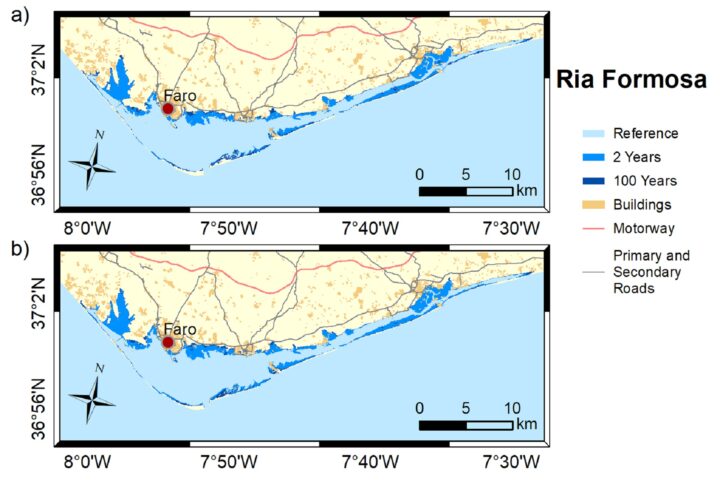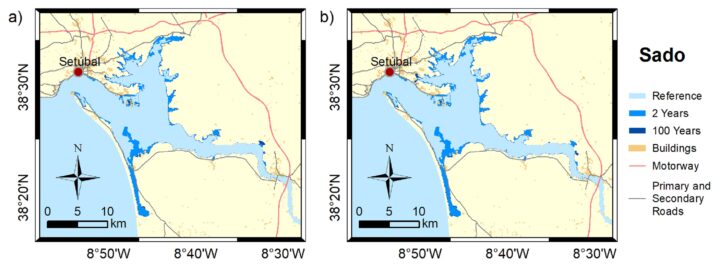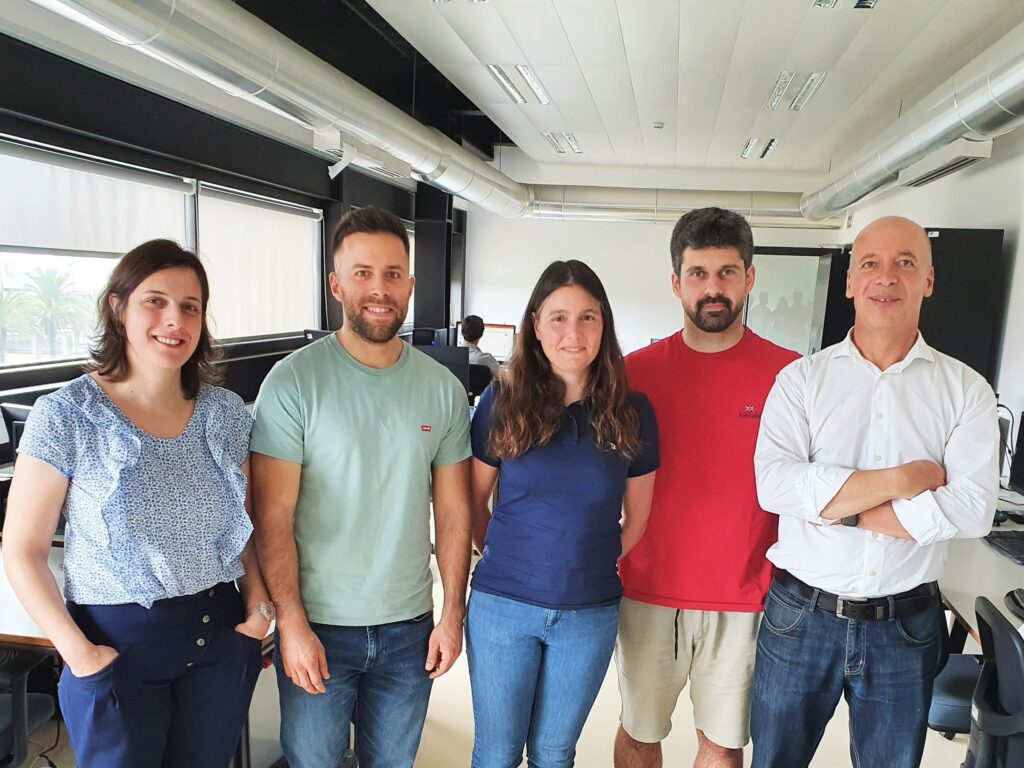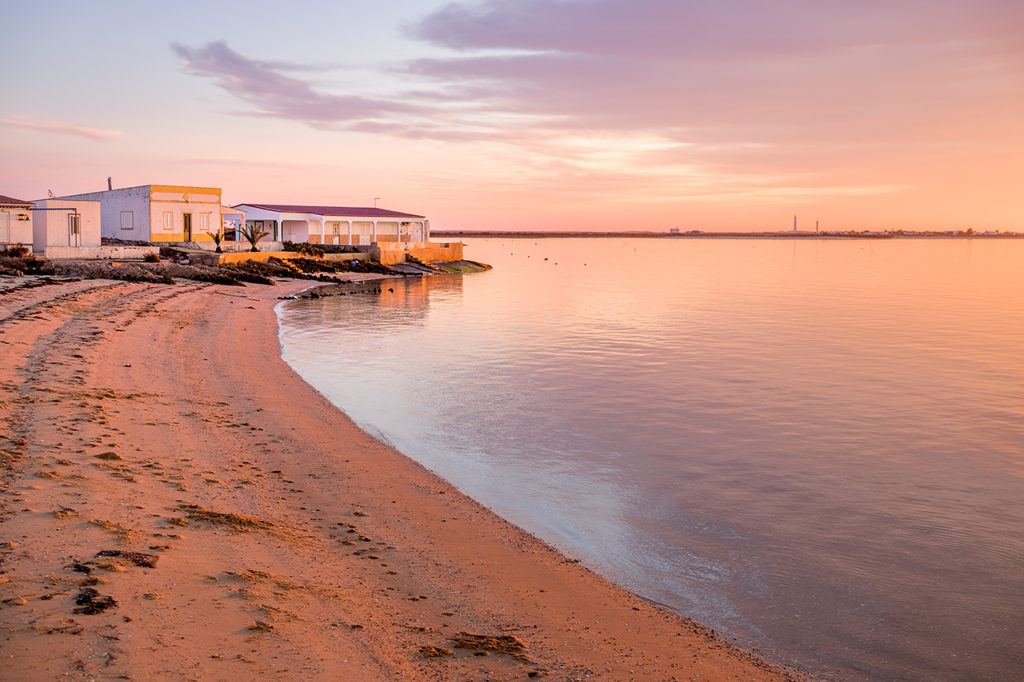A study by the University of Aveiro concludes that, by 2055, the rise in the average water level in the Ria Formosa will affect 2200 people, while in the Sado Estuary it will affect 2500.
The study also reveals that the total number of people affected will rise to 2500 by 2100 in the Ria and close to 5000 by 2100 in the Sado.
Despite the large number of people who will be able to see their homes or businesses affected by the rise in the average sea level, this situation, according to the study by the University of Aveiro (UA) does not reach the figures that have sometimes been announced.
«Praça do Comércio, Algés and Vila Franca de Xira under water? Marginal of Figueira da Foz flooded? Aveiro, Troia and the entire Algarve coastline submerged? It is an exaggeration”, concludes the UA.
Although the future will, in fact, involve the scenario of thousands of people affected on the Portuguese coast, the UA considers that “it is a case to say that the news about the impact of the rise in the average sea level resulting from climate change in the main estuaries of the country are manifestly exaggerated'.
The conclusions are based on a study that integrated, for the first time, «numerical models of high spatial resolution and adapted to each location to conclude that the water level will rise, yes, but without catastrophism», says the educational institution in communicated.
The University of Aveiro also emphasizes that, in the Tagus estuary, in the year 2055, 10,9 square kilometers of urban areas will be flooded due to the combined effect of the tide, the rise in mean sea level and as a result of extreme weather phenomena that may occur once every 100 years.

By 2100, that figure will be 14,9 square kilometers. The researchers predict that about 66 square kilometers (km2) of agricultural and grazing areas will be flooded by 2055. By 2100, it will be 95 square kilometers. Given the population density, it is estimated that more than 6500 people could be affected by the rising water of the Tagus estuary in 2055. By 2100, the number of people affected will exceed 12500.
Regarding urban areas, in the Ria de Aveiro (6,4 km2 of flooded area in 2055 and 8 km2 until 2100), at the mouth of the Mondego (1,4 km2 in 2055 and 1,7 until 2100), in the estuary do Sado (5,6 km2 in 2055 and 6,7 until 2100) and in the Ria Formosa (3,6 km2 in 2055 and 4,4 km2 until 2100), says the UA.
«The forecasts of flooding in national estuaries that have been published in the media are exaggerated and considerably higher than those obtained in this study, as they result from works that disregard the physical processes that determine the propagation of the flood wave along the estuaries», emphasizes João Miguel Dias, researcher at the Center for the Study of the Environment and the Sea (CESAM) and the Department of Physics (DFis) and one of the authors of a study published in the journal Scientific Reports.

«We found that the energy of the flood wave is strongly dissipated during the flooding of tidal and alluvial plains, and that this dissipation translates into a reduction in the maximum water level, and consequently in the extent of flooding», points out Carina Lopes.
The UA researchers also verified that «the flood wave is amplified in the regions upstream of the entrance to the Tagus and Sado estuaries, due to their divergent geometric configuration».
However, «this amplification does not result in an increase in the flooded area, since the regions adjacent to the entrance of these estuaries have relatively high levels». For all these reasons, «we conclude that the simplified flood models project particularly exaggerated flood extensions in the Ria de Aveiro and in the Mondego and Tejo estuaries».
According to UA researchers, “alarmist forecasts tend to demobilize the population and generate distrust in science, so it is urgent to make reliable forecasts available to the public in order to guarantee their involvement and commitment in the protection of coastal regions and in the fight against changes climate".





















Comments